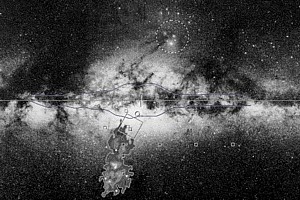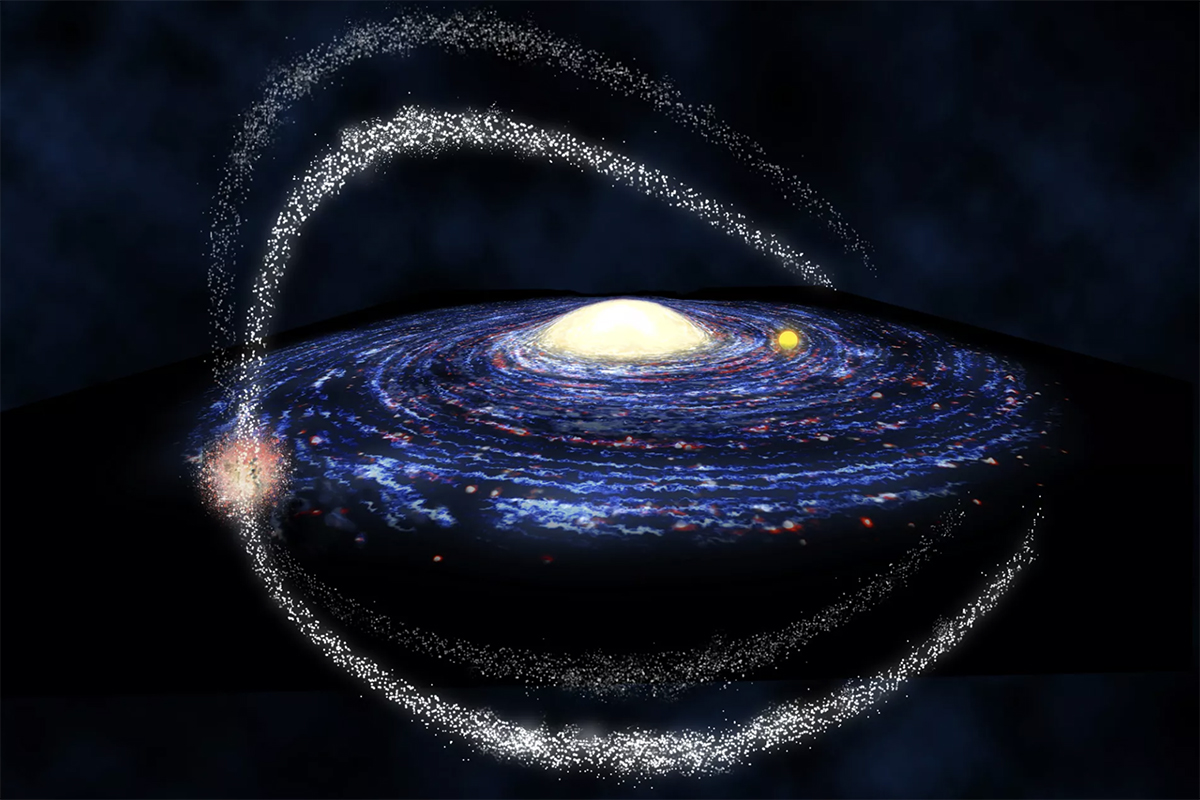
Only through observations in infrared, capable of penetrating interstellar dust, astronomers have been able to determine the location and morphology of this galaxy, which turned out to be a satellite galaxy of the Milky Way and even closer than the Magellanic Clouds. Observations after 2003 would reveal that SagDEG had suffered the consequences of its proximity: the Milky Way was slowly "devouring" it. So far, the story makes sense. SagDEG is a small member of the Local Group, very close to the Milky Way, but succumbing to the latter's gravitational force, its stars are dragged along to end up joining it and SagDEG disappears as an individual galaxy.
A misinterpreted discovery
It was precisely this discovery, made in 2003 by a group of astronomers from the University of Virginia, that gave rise to the misrepresentations and that (for some reason) appeared as fake news in mid-2007. It is very likely that the confusion arose when it was noted, in the 2003 study, that a part of the SagDEG structure merging with the Milky Way was quite close to our Solar System, almost "in its path" so to speak.
To illustrate this, the following graph shows how SagDEG is being devoured by the Milky Way and the position of the Sun very close to the "watering hole" of stars. The conclusions of the study mainly indicated the "cannibalism" that the Milky Way is carrying out with respect to SagDEG, but below I quote an extract translated from the original news, where statements by Professor Steven Majewski, one of the members of the group of astronomers at the University of Virginia, are mentioned:

«On the other hand, Majewski and his colleagues have been surprised by the proximity of the Earth to a portion of the structure of (the dwarf galaxy) Sagittarius.
'In just a few percent of its 240-million-year orbit around the Milky Way, our Solar System passes through the trail left by the Sagittarius structure,' Majewski says. 'Remarkably, stars from Sagittarius are now showering us into our present position in the Milky Way. Stars from an alien galaxy are relatively close to us. We will have to rethink our assumptions about the Milky Way in light of this pollution.'
This point is key. According to Majewski's statements, at no point is it being questioned that our Solar System originated in the Milky Way, and that it instead comes from the Sagittarius dwarf galaxy; even less is there any mention of having solved the "mystery" of the inclination of the Milky Way as seen from Earth. Allusion was only made to the curious coincidence that our Solar System is located close to the trail left by SagDEG in its process of fusion with the Milky Way, and to the fact that relatively nearby stars could actually belong to SagDEG.


